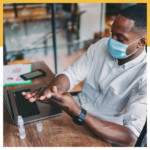 After experiencing enormous stress, decreased revenues and unprecedented safety concerns during Covid-19, many organizations have come to realize that the amount of effort they spend planning for disaster ahead of time can spell the difference between failure and survival. Evidence suggests that crisis prevention is no longer an afterthought but one of the most important strategies every company, business or organization should focus on, to stay in the game and prevail over future calamities.
After experiencing enormous stress, decreased revenues and unprecedented safety concerns during Covid-19, many organizations have come to realize that the amount of effort they spend planning for disaster ahead of time can spell the difference between failure and survival. Evidence suggests that crisis prevention is no longer an afterthought but one of the most important strategies every company, business or organization should focus on, to stay in the game and prevail over future calamities.
Given the relentless and constantly evolving nature of the pandemic, it is incumbent upon employers to conduct a thorough hazard assessment and stay alert to outbreak conditions. While remote working arrangements are here to stay, many employees started returning to the office, either on a part-time or full-time basis. Therefore, it is important to have specific guidelines in place providing instructions on how to ensure workplace safety and maintain a strong safety culture. From avoiding close contact with colleagues who are visibly sick to washing hands, practicing good respiratory etiquette, or wearing personal protective equipment – every worker is expected to adhere to safe work practices and be mindful of others.
When the pandemic hit, many organizations were overwhelmed and ill-equipped to weather the unexpected storm. After all, they had to deal with dramatic changes in market forces and address supply chain disruptions, forcing them to make tough business decisions and sort through conflicting business priorities. For many companies, painful layoffs, furloughs, delayed investments, or salary cuts were inevitable choices to minimize disruptions, maintain excellent customer service and stay solvent. As a result of drastic cost-cutting measures implemented by employers, many employees were stressed, anxious and frustrated facing uncertain future and mounting challenges brought on by Covid-19. In addition to that, those working from home had to figure out how to navigate unfamiliar software, deal with computer glitches, slow internet connections or potential hacking, making it extremely difficult to stay productive or operate at their optimal level.
Companies have to learn from their mistakes and start clearly identifying alternative working arrangements and the “new normal” as soon as possible, while prioritizing the health, workplace safety, and well-being of their most valuable asset – their employees. These steps should be combined with timely communications and various employee support programs.
According to McKinsey & Company, it’s important to keep in mind that in a highly emotional and tense environment that characterizes a crisis, leadership should promote psychological safety so employees can openly discuss ideas, pose questions, and articulate their concerns without fearing potential repercussions. This will enable business leaders to determine how to make sense of the situation and how to handle issues head-on. Furthermore, executives should empower the right team members with the authority to make crisis-response decisions and exercise their own judgement when navigating rough waters.
As suggested by analysts from Ernst & Young, it is also essential that organizations determine how the crisis effects budgets and business plans. In fact, they should take time to play out various scenarios, stress-test financial plans and determine the potential impact on financial performance.
In my new book, The Workplace Transformed, I stress the importance of planning ahead, envisioning potential challenges, solving future problems, and alleviating setbacks and disasters that may inevitably arise going forward. After all, the best way to manage a crisis is to stay ahead of it. Organizations should keep their crisis management systems healthy and ready to act, even when they do not anticipate a crisis in the near future. Furthermore, I emphasize that the global health crisis should serve as an impetus to action and urge companies, businesses, and organizations of all sizes to develop a comprehensive and well-thought-out crisis management plan as soon as possible to ensure workplace safety.
I hope you will enjoy reading my book and join me in the discussion and the movement of The Workplace Transformed on LinkedIn @Angela Reddock-Wright, on Facebook and Instagram @iamangelareddockwright.
